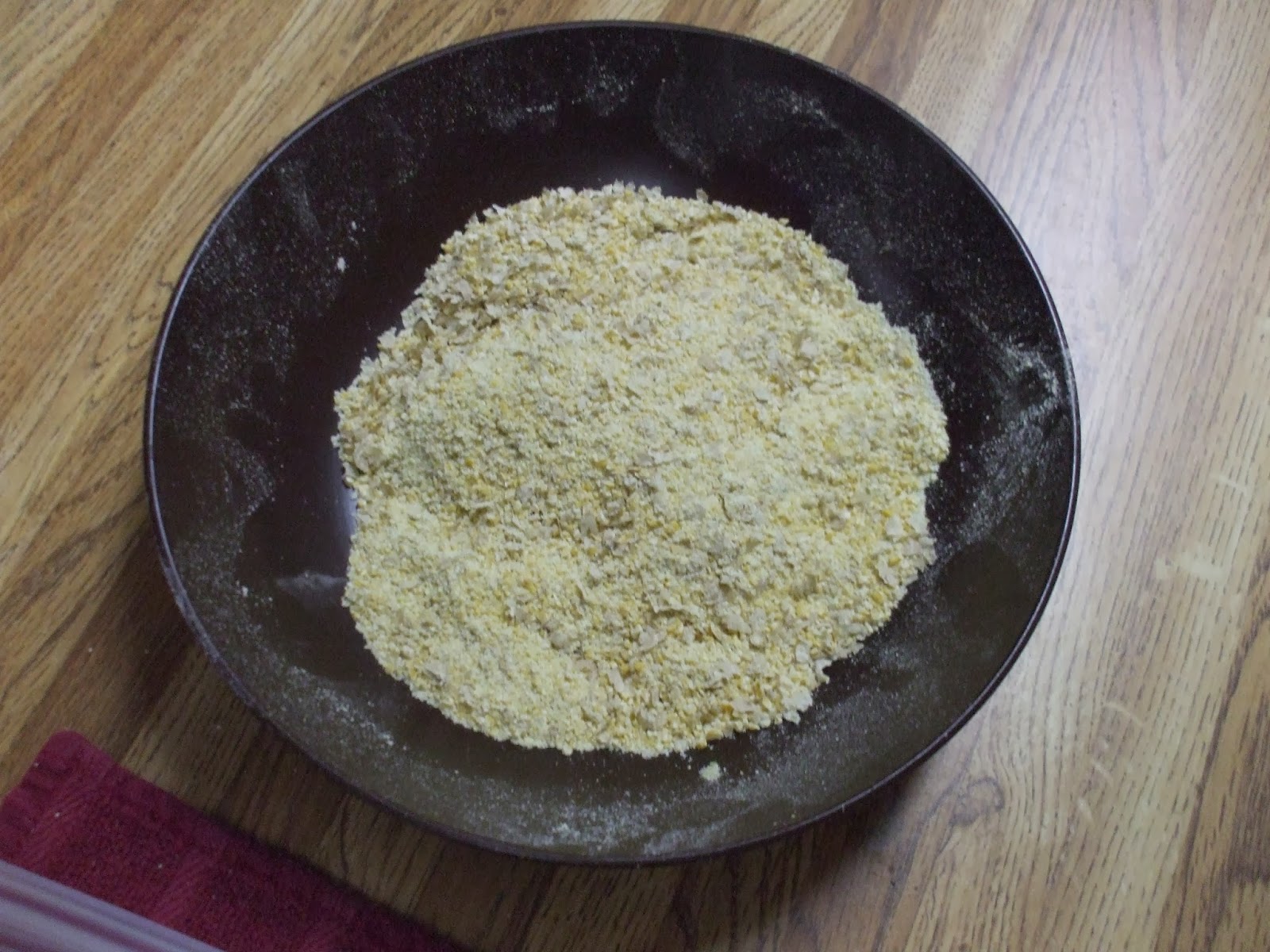This post is a continuation of the previous post Hobby Grain Milling in which some of the ideal characteristics of a good grain mill were described. Our topic for today is the actual milling/grinding process.
The first step is to aquire your feedstock or whole grains, these can be essentially any seed grain but a few of my favorites are red wheat, rice, black beans, and corn. I recommend purchasing at least 10 lbs of grain before doing any milling to minimize clean up efforts and produce a good quantity of flour.
 |
| Chickpea (Garbonzo Bean) Flour |
Begin by loading the hopper on your mill and set the clearance on the grinder head. The clearance or gap between the grinding disks essentially controls the final quality of the flour as well as the efficiency of the mill. Your initial clearance will vary by grain type but I recommend an initial setting of approximately half the diameter of the selected grain. This helps to reduce wear on mill and prevents the auger from becoming jammed. A correct clearance will always result in the two grinding disks being square. If the disks are not square larger grains will pass through the mill and more effort will be required as the disks will also bind. The signature of a properly set clearance is the even flow of grain millings from all edges of the grinding disk.
 |
| Grain Mill Clearance Adjustment Screw in Lower Left |
After the initial breakdown mill, the clearance can be adjusted more freely depending on your final goal. I recommend milling/grinding your grains at least 3 times to ensure a uniform flour texture. More milling will yield a smoother flour but that said all mills will have a minimum clearance or smoothest flour consistency that will not change no matter how many times you grind the flour. Odds are it will not resemble anything like that of bleached wheat flour bought at the store, but this coarser flour is better nutritionally and in most cases the final cooked product is no different. Another reason I do not recommend milling at this minimum clearance is the significant amounts of contact between the grinding disks, potentially producing metal particulate in your flour.
Depending on your grain choice you may find it beneficial to purchase a flour sifter to remove the seed husk left behind. This is especially true when grinding chickpeas or whole kernel corn
.



Comments
Post a Comment